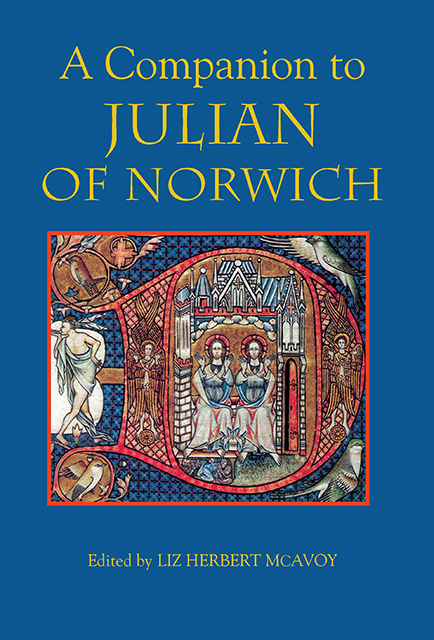12 - Space and Enclosure in Julian of Norwich’s A Revelation Of Love
Published online by Cambridge University Press: 10 March 2023
Summary
A writer's domestic interior opens a window onto both author and text, reminding us that what we may at first perceive to be the timeless and universal truth of writing cannot be so neatly extricated from the complex particularities of its spatial and material origins.
As much as a person is the product of her surroundings, her interiors and her movements, so a text is shaped by the space in which it was composed. We know, because she tells us, that Julian experienced her visions in May 1373 while resting in a sickbed. We do not know where she wrote her first account of those visions, the Short Text of A Vision Showed to a Devout Woman, finished in the 1380s, perhaps later. By the time she was fifty she was enclosed in an anchorhold, and this is where we know she composed the Long Text, A Revelation of Love. In the case of this second, longer text, the link between ‘inner mind and inner dwelling’ is unavoidable: A Revelation of Love cannot be extricated from the space of the anchorhold in which it was written any more than Julian could have been once she was ritually enclosed in the ‘domestic interior’ of her cell. Yet for Julian the relationship between text and the ‘theater of composition’ is complicated by the presence of another interior beyond inner mind and inner dwelling. Her divine visions, beginning with the core experience of May 1373, became their own experiential world which could be returned to in her mind and by means of her written accounts over the next forty-odd years, and they likewise contained within themselves distinct structures of interiority. The domestic interior of the anchorhold is thus joined by visionary space as a valuable pair of windows onto an author about whom we know so little.
Other essays in this Companion focus on the historical and social implications of Julian's enclosure in the anchorhold or on the meaning of the images in the Long Text, which was composed within that setting; my own purpose, however, is to concentrate on the intersection of the two. This essay, therefore, will consider the Long Text as a product of the anchorhold and examine how it negotiates a tripartite system of enclosures: the physical space of the anchorhold, the visionary space of the revelation and the authorial space of the text.
- Type
- Chapter
- Information
- A Companion to Julian of Norwich , pp. 154 - 165Publisher: Boydell & BrewerPrint publication year: 2008
- 2
- Cited by



